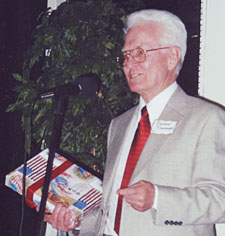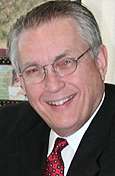Bible Studies for Life Series for Sept. 16: Facing the fiery furnace
Posted: 9/06/07
Bible Studies for Life Series for September 16
Facing the fiery furnace
• Daniel 3:1-2,4-6,8,12-14,16-18,24-26a,28
First Baptist Church, Gatesville
This story of Shadrach, Meshach and Abednego is one of the best known in all the Bible. Any time you have a song written to tell your story, you can pretty well guarantee the story is well known. There is good reason this story is so popular; it is a great story! It has everything a good story needs; a good plot, intrigue, conflict and a miraculous rescue—what more could you need?
There are three primary themes in this story. The first theme deals with idolatry. Nebuchadnezzar built a statue of gold, 90 feet high and nine feet wide and commanded everyone to fall down and worship before the statue or be thrown into a blazing furnace.
It was easy for Shadrach, Meshach and Abednego to recognize the threat here. They are being told to demote their God by not worshipping him alone. They are told to worship the statue of a god they know does not exist and recognize this nonexistent god as an equal to the living God of Israel.
For the people of Babylon, worshipping this idol would not have been a problem; they recognized many gods and would not have had a problem adding one more god to their repertoire. But for people who have been raised on the Shema, “Hear O Israel: The Lord our God, the Lord is one. Love the Lord your God with all your heart and with all your soul and with all your strength” (Deuteronomy 6:4-5), bowing before a supposed god would have been the height of treason.
It is easy for us to recognize this as idolatry, it doesn’t get much more blatant than this story. Our temptation towards idolatry is much more subtle than the story of the fiery furnace and is much more dangerous. None of us will be threatened with death if we do not bow before an idol, but we will be tempted to put our trust in something other than the crucified and risen Christ.
Some of the things that can vie for our loyalty and love are the things God has given us. One of the most obvious is family. You probably have heard it said in a wedding ceremony, “Even before the foundation of the church, God formed the family,” and it is an accurate statement. Family can become an idol when we separate it from subjection to the lordship of Christ. It happens when we compartmentalize our lives so that God takes care of our “spiritual” life, but we believe we can handle our marriage and children. Family then becomes more important than God, and we miss the blessing God has for our family by not committing our family to him.
The same is true of the church. When the church becomes more important than what God does in and through the church we have made it an idol and have taken its leadership out of God’s hands. When we are more proud of the programs, buildings, budgets and attendance than we are of God’s presence in our midst, then the church has taken the place of the God who has made us a part of it and become an idol.
The second important theme is courage. While it would have been easy for Shadrach, Meshach and Abednego to recognize the threat of idolatry, it would have been another thing altogether to refuse to fall down before it in the face of the threat of death.
The manner in which they exhibited their courage is a great model for us to follow. Nebuchadnezzar had no idea anyone was refusing to obey his command until some of his astrologers told him. There was no false bravado; Shadrach, Meshach and Abednego simply lived their lives as they always had—worshipping the one true God and not an idol. They did not go to the town square or stand on the feet of the idol and proclaim its falsehood. They did not threaten the Babylonians with the consequences of their worship of a false god; they lived their lives as they always had.
Even before Nebuchadnezzar, their courage is displayed in a dignified manner. They did not threaten the king, they simply stated that their faith was in God and not in the king or any of the idols he had made. They did not challenge Nebuchadnezzar to a contest to see whose God was greater. They simply stated that their God was able to rescue them, but even if God did not, they would not bow to Nebuchadnezzar’s idol. The three friends would live their lives in a manner that honored God. We will see the manner in which they displayed their courage was important to the final result.
The third theme is God’s faithfulness and redemption. Shadrach, Meshach and Abednego were convinced of God’s faithfulness regardless of the outcome. This theme has been revealed previously in the book of Daniel; God’s faithfulness is not contingent on the circumstances of life. This time God’s faithfulness is revealed in the friend’s redemption from the fiery furnace. The result is that Nebuchadnezzar again recognizes that, “no other god can save in this way.”
The manner in which Shadrach, Meshach and Abednego displayed their courage and faithfulness is similar to the way Jesus displayed his faithfulness. Jesus did not call down fire from heaven on those who condemned him but humbled himself to the point of death on a cross.
Living a Christian life with courage and faithfulness does not mean we have to stand on the mountain to proclaim his greatness against all others. God chose the way of the cross to redeem the world, a way of shame and humiliation, not bravado and boisterousness. God calls his people to do the same, living a life totally dependent upon his grace and mercy, trusting in no other than him.
Discussion questions
• In what ways are Christians apt to make their church into an idol?
• Why do courage and humility seldom go together?
• Have you sometimes questioned God’s faithfulness in the midst of the storms of life?






